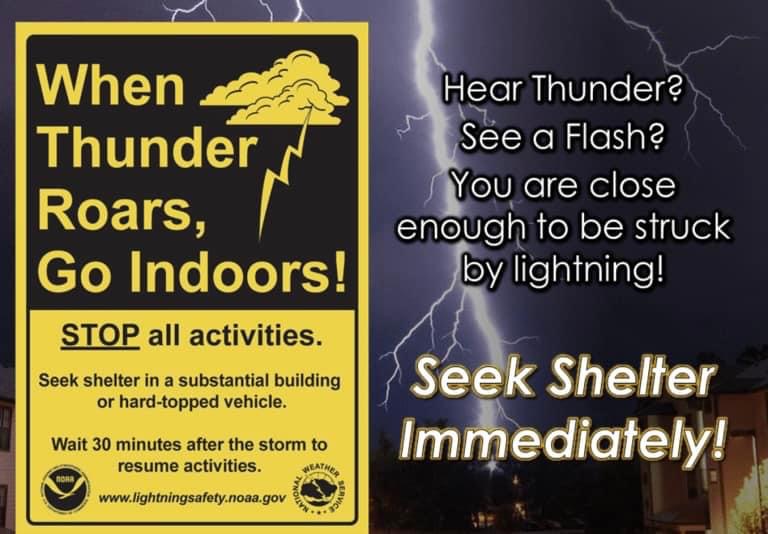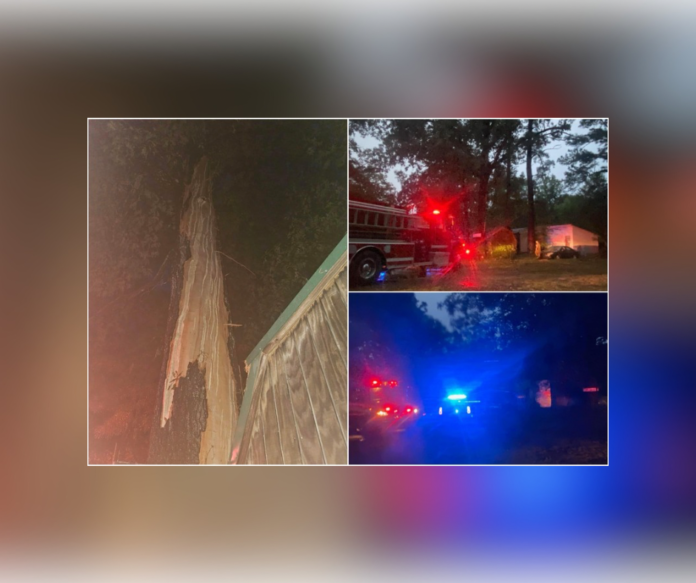Black Lake, LA (7/8/2024) – Severe thunderstorms with heavy cloud-to-ground lightning led to two structure fires in Natchitoches Parish on Friday, July 5th, as reported by the Natchitoches Parish Sheriff’s Office (NPSO).
The first incident was reported around 6:10 PM when the NATCOM 911 Center alerted the Natchitoches Police and Natchitoches Fire Department about a structure fire in the 100 block of Chinquapin Drive in Natchitoches. The fire, which was apparently caused by a lightning strike, was brought under control shortly after the fire department’s arrival.
Approximately an hour and a half later, at 7:41 PM, the second fire was reported to the NATCOM 911 Center. This fire occurred in the 100 block of Mack Wall Road in the Black Lake area near Campti. Natchitoches Parish Fire Protection Districts #9 and #3, along with NPSO Deputies Cpl. Cody Oliff and Alonzo Middleton, responded to the scene.
According to the units on site, lightning struck a tree, and the electrical current traveled about 10 feet to a nearby mobile home, causing a minor fire and damaging electrical appliances. The fire was quickly contained.
There were no injuries reported in either incident.
Given the lightning-induced nature of these fires, the NPSO included a safety message from the National Weather Service about the dangers of thunder and lightning:
Thunder and Lightning Safety Message from the National Weather Service
Thunder is the sound caused by a nearby flash of lightning and can be heard for a distance of only about 10 miles from the lightning strike. The sound of thunder should serve as a warning to anyone outside that they are within striking distance of the storm and need to get to a safe place immediately!
Thunder is created when lightning passes through the air. The lightning discharge heats the air rapidly and causes it to expand. The temperature of the air in the lightning channel may reach as high as 50,000 degrees Fahrenheit, five times hotter than the surface of the sun. Immediately after the flash, the air cools and contracts quickly. This rapid expansion and contraction creates the sound wave that we hear as thunder.
Although a lightning discharge usually strikes just one spot on the ground, it travels many miles through the air. When you listen to thunder, you'll first hear the thunder created by that portion of the lightning channel that is nearest you. As you continue to listen, you'll hear the sound created from the portions of the channel farther and farther away. Typically, a sharp crack or click will indicate that the lightning channel passed nearby. If the thunder sounds more like a rumble, the lightning was at least several miles away. The loud boom that you sometimes hear is created by the main lightning channel as it reaches the ground.
Since you see lightning immediately and it takes the sound of thunder about five seconds to travel a mile, you can calculate the distance between you and the lightning. If you count the number of seconds between the flash of lightning and the sound of thunder, and then divide by five, you'll get the distance in miles to the lightning: five seconds = one mile, 15 seconds = three miles, zero seconds = very close.
Keep in mind that you should be in a safe place while counting. Remember, if you can hear thunder, chances are that you're within striking distance of the storm. You don't want to get struck by the next flash of lightning.

As a community, it is essential to heed these warnings and take immediate action to ensure safety during thunderstorms.








